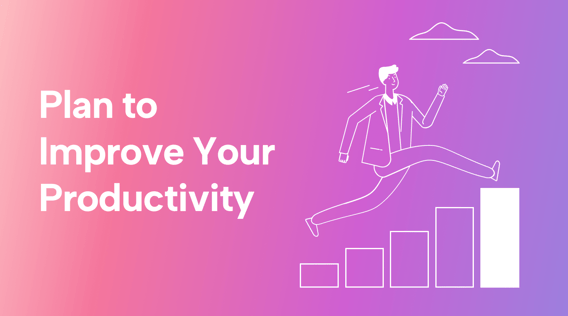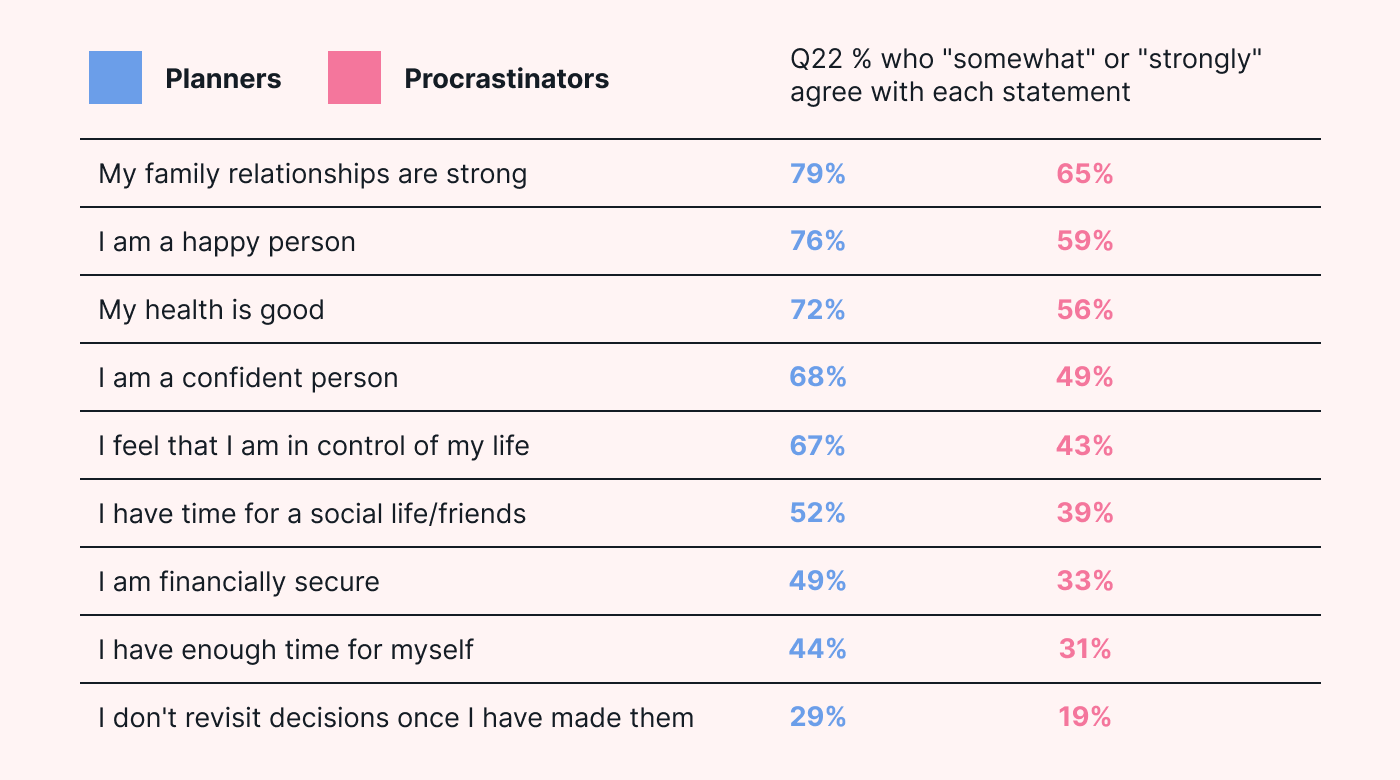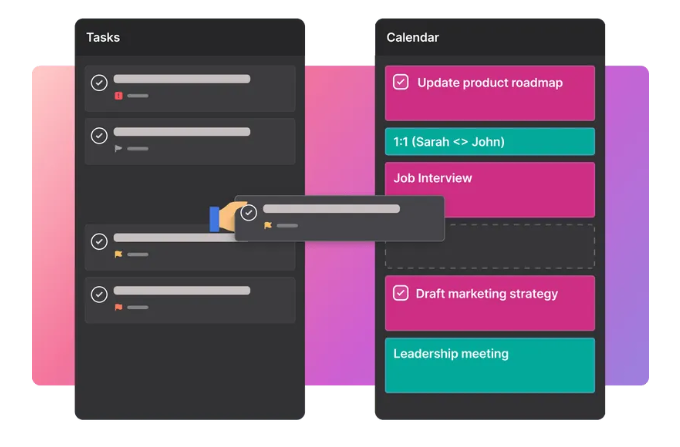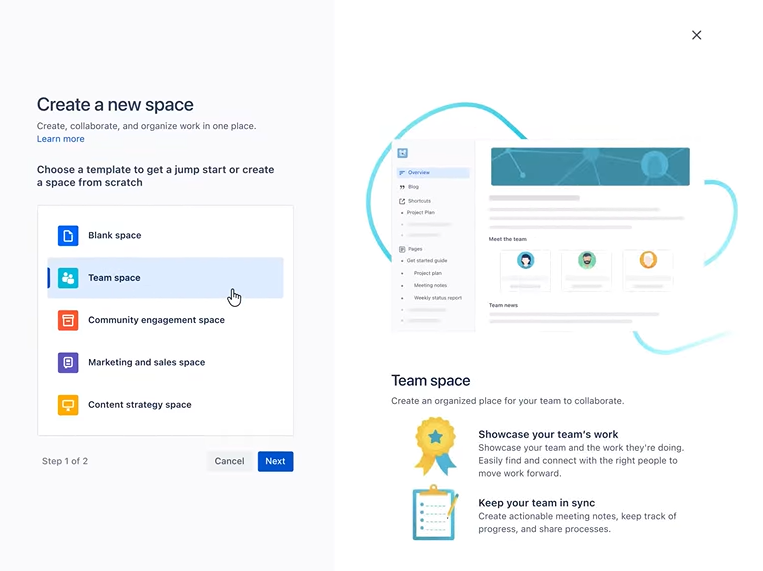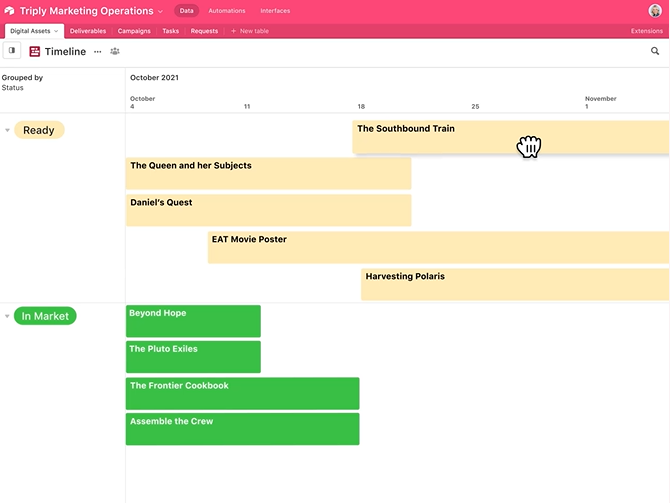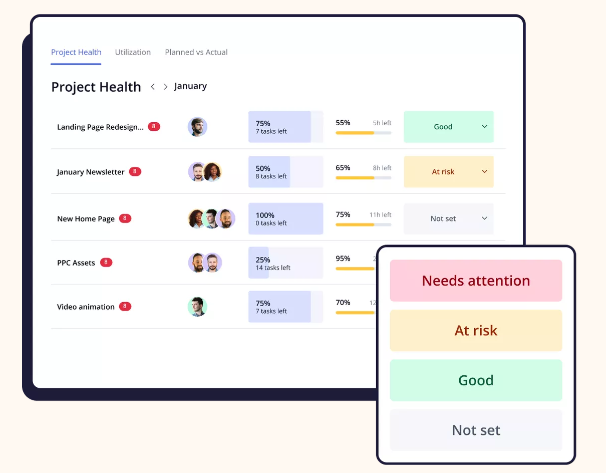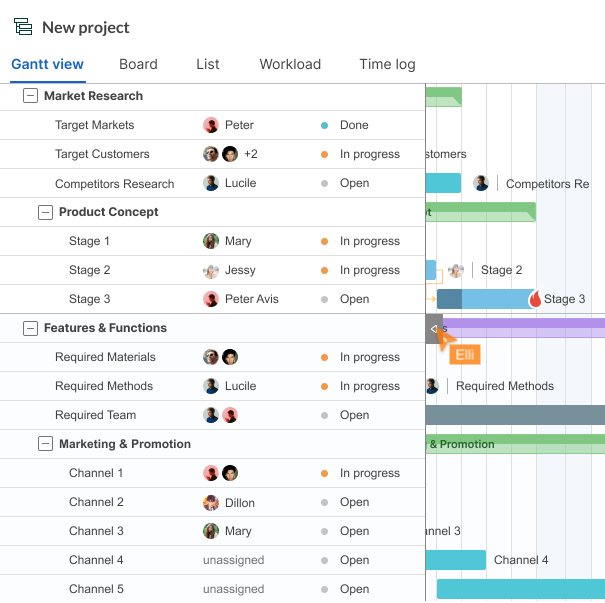Productivity planners have been keeping the world on track for quite some time. In fact, the first to-do list is often traced back to Benjamin Franklin, who put pen to paper and drew up a rigorous daily schedule for himself.
Unfortunately, he was also one of the first to encounter the biggest problem with any productivity plan: unexpected meeting requests. Of course, this is probably a familiar issue for most small business owners and entrepreneurs.
You might be experiencing the same workflow problems Benjamin Franklin had hundreds of years ago, but now, we have better solutions. Today's productivity tools use advanced technology like AI and automation to ease your busy week.
Let's look at how digital planning tools can boost productivity.
What is a productivity planner?
Did you know that in a recent survey, 67% of respondents said that spending too much time in meetings and calls distracts them from making an impact at work, and 55% spent more than 2 hours a week attending unproductive meetings and calls. Clearly, our time on the clock could be used more effectively. However, disorganization is just one factor when it comes to productivity.
Employee stress is at an all-time high, and it's significantly impacting health and productivity in the workforce. In fact, the estimated cost of worker stress falls between $221 million to upward of $187 billion, with around 70–90% attributed to losses in productivity.
The modern workplace can feel overwhelming for employees. They often have to manage multiple tasks, attend meetings, and meet deadlines at the same time. So, it's no wonder that burnout has become a widespread issue in many workplaces.
Simple problems like not being organized, getting stuck in workflows, or managers not having a clear view of things can make tasks take more time and effort. Needless to say, this reduces the amount of work your employees can get done and makes them feel less motivated. To solve these issues, many small business owners are using productivity planners.
Planner apps combine digital calendars and project management tools. They help with things like scheduling, keeping track of tasks, and working together with your team. The most advanced iterations of a weekly planner leverage tools like AI to make busy days truly frictionless, improve efficiency, and reduce employee stress.
Advantages of using a productivity planner
We all know that procrastination is the opposite of being productive, but many people don't realize how harmful this habit can be. For instance, a 2021 survey found that 51% of planners said they had enough time for their social life, compared to just 44% of procrastinators. In fact, the study found that planners experience benefits across multiple categories such as physical health, emotional well-being, family relationships, and financial security. Plus, there's even a reported increase in a planner's respectability to family, friends, and colleagues. Here are the results from one of the survey questions:
You already know how your employees' mental, emotional, and physical well-being is directly reflected on your balance sheet. These figures suggest that combating procrastination in your workforce is financially imperative, not just because it increases efficiency but also because it can reduce burnout.
Clearly, planning is worth the effort, but how much can a digital tool help? Well, each unique work environment will see its own set of improvements. However, there are several benefits that companies across the board are likely to see when they use a digital weekly planner.
- Teams with organized and visible workflows can move through tasks in a more targeted way. This can lead to a noticeable improvement in the quality of projects by making sure that team members have enough time in their daily schedule to finish their work.
- Using productivity planners helps save time when scheduling meetings, which means there is less work needed for administrative tasks related to scheduling and coordination.
- Being disorganized often leads to missed deadlines. Using a daily planner can help prevent this by making projects easier to see and helping with things like deciding which tasks to do first. This means team members can stay on track and make sure projects are completed on time.
- Procrastination is often a symptom of chronic stress. It's important for your team to have time to relax and recover, but it shouldn't harm your business. Using planners can make things more efficient, so team members can have more time to concentrate without getting less work done.
- Busy people are often plagued with nagging thoughts about their to-do lists. An inability to relax, even during off hours, can contribute to burnout in the long run.
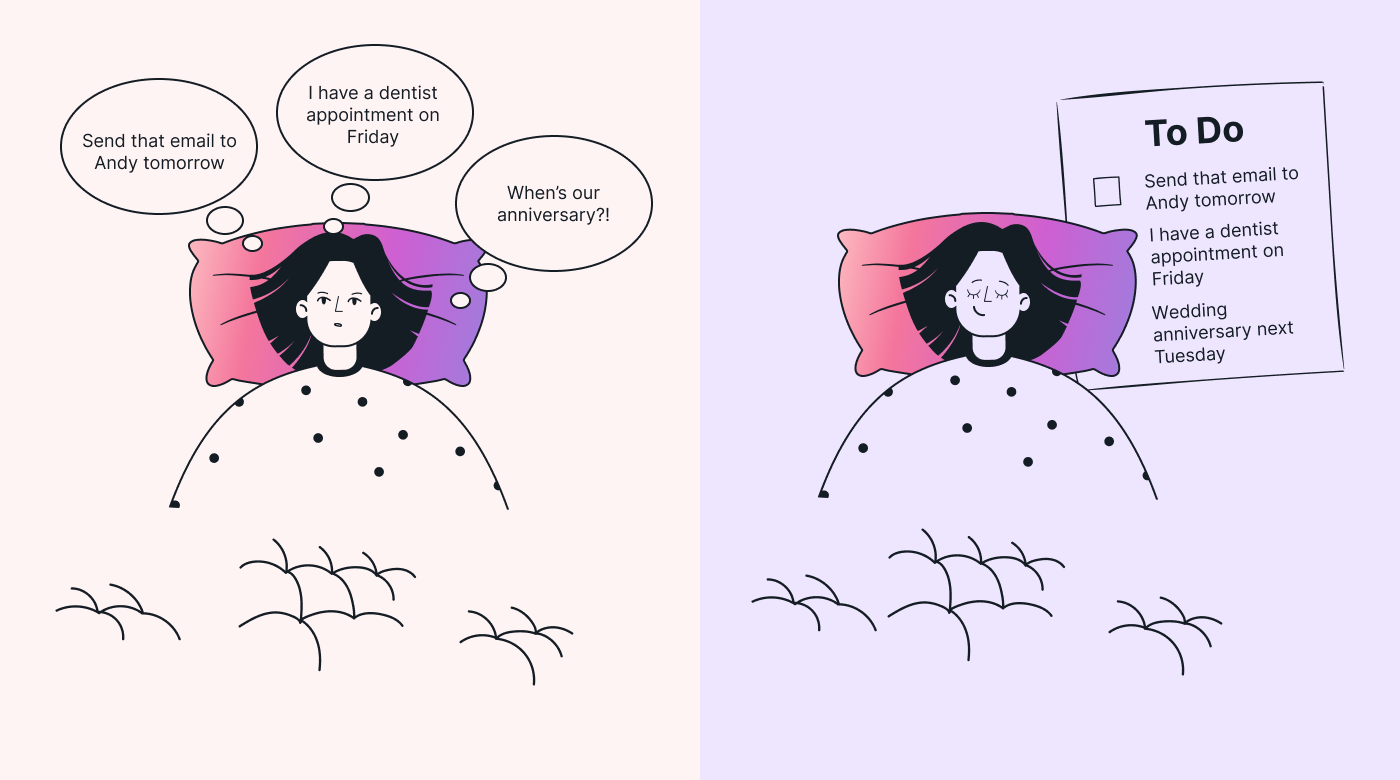 |
The Zeigarnik Effect is when the brain reminds us to finish tasks. However, new research shows that it might actually be the brain's way of nudging us to make a plan for the task. However, recent research suggests that the Zeigarnik Effect might be a reminder to make a plan for a task instead of finishing it. So, you can reduce nagging stress in the workplace by getting a digital productivity planner to keep track of your team's to-do lists for you.
How to choose the best productivity planner
Technology is driving greater efficiency for businesses across sectors. In fact, global spending on digital transformation is projected to reach 3.4 trillion dollars by 2026.
This carries significant implications for small businesses. Competitive markets demand that companies continuously improve on pace, or ideally quicker than their industry rivals.
Teams that stick to their current scheduling systems soon won't be able to keep up with competitors that are making the most of digital productivity tools. So, the question for small business owners isn't if they should invest in a weekly planner, but which one they should select.
The growing need for weekly planning tools has resulted in many choices, although not all of them are equal. Investing in an advanced planner can yield exponential returns in both the short and long term. So, let's go over the selection criteria for our list of 2023's top planning apps:
- Features: The distinction between a basic to-do list and a more advanced project management tool lies in the features they offer. Top productivity planners use strong task and project planning features, along with automated meeting scheduling, to make managing monthly calendars easy for your team.
- Costs: When picking a planner, it's crucial to find one that strikes a balance between its features and ease of use. You want to make sure you're getting more value from it than the time and effort you invest to generate a positive ROI.
- User-friendliness: Complicated user interfaces can make it harder to be productive, especially when your team isn't familiar with planning tools. So, it's important to choose a platform that's easy to navigate.
- Security: It's important that your planner protects your users' information and maintains internal privacy. Companies that handle customer data should pay close attention to a platform's security features.
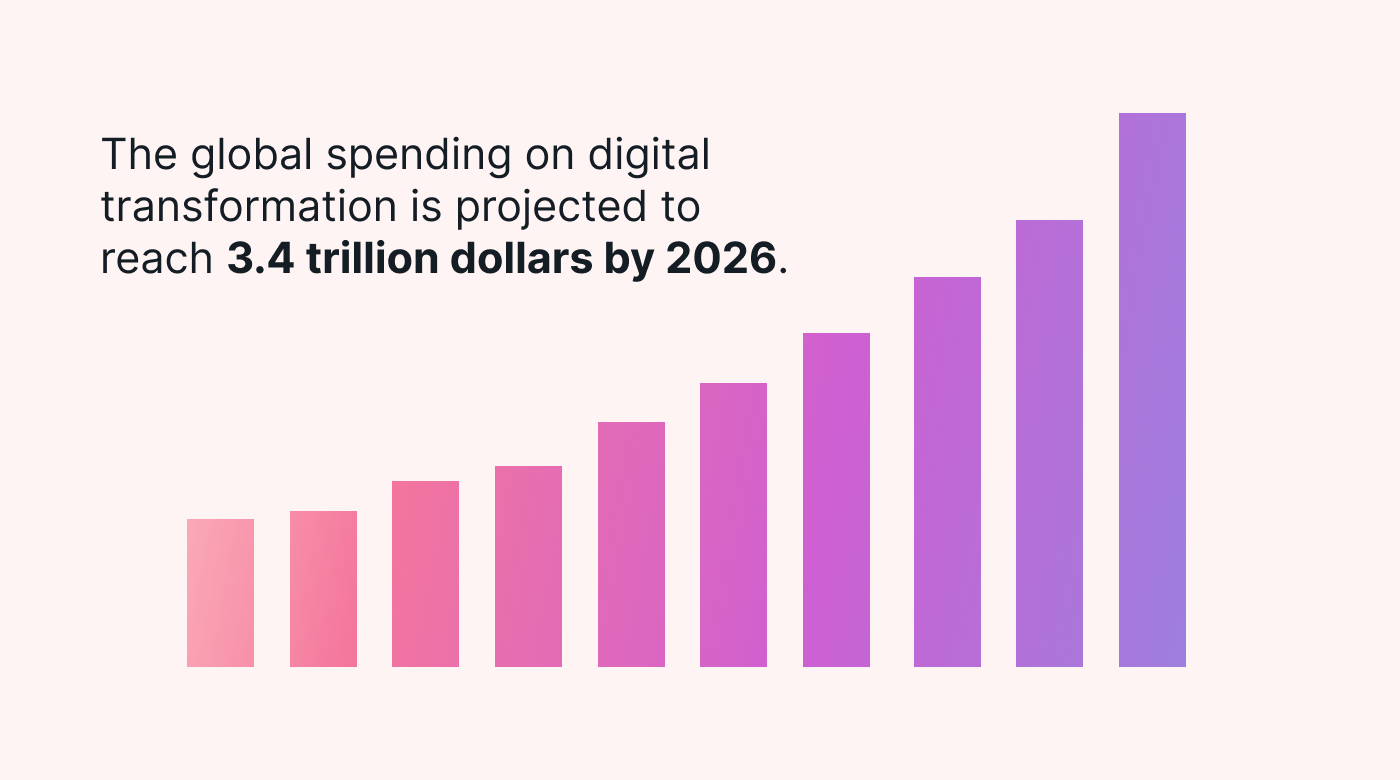 |
- Accessibility: With the increase in remote work and the busy schedules of small business owners, it's crucial for a planner to offer a seamless experience across both desktop and mobile devices.
5 best productivity planners of 2023
The quality of your productivity planner will have a direct impact on your company's internal operations. So as you choose your planning app, it's important to keep the specific needs of your business in mind. To make it easy for you, we've compiled a list of the best productivity planners of 2023, starting with this year's top pick.
1. Motion
Motion's AI calendar management features are what really set this planner apart from the rest. The platform's calendar automatically adjusts users' schedules based on their prioritization of meetings, tasks, and projects to improve workflows and cut down on time waste. Plus, this adds to the already intuitive design to create an easily navigable app. But these aren't Motion's only standout features.
The meeting booker makes it easier for potential clients to reach out to your team while also cutting down on your internal client management workload. You can send custom booking links to external parties, through which they are shown your team's availability. Users can also block out time periods for these meetings, or block off sections of the day for other tasks. This significantly cuts down on the traditional back-and-forth required to schedule engagements.
Motion makes it easier for managers to delegate effectively by enabling the creation of subsidiary tasks within a project that automatically pop up on employees' calendars as they're created.
These features set Motion apart from other planning apps on the market, although the platform does have a whole host of other useful features like rigorous access controls and an omni-channel experience between mobile and desktop.
Learn more about Motion here.
Pricing:- 7-day free trial
- Per user: $34 billed monthly or $19 billed annually
2. Confluence
Confluence is designed to serve various professionals, but it specifically caters to software engineers and development teams. If you work in that industry, it could be the suitable option for your team.
Confluence is a platform that offers strong integrations and is easy to use. It helps users find content that may have been separate before, making collaboration more efficient. However, there are some downsides to consider. Confluence lacks SSO/Oauth, has reported delays in real-time page updates, relies on user adoption, and has incomplete PDF download functionality.
Despite a few flaws, Confluence remains a top choice for software engineers and development teams, especially those who are already using Jira for bug tracking.
Learn more about Confluence here.
Pricing:
- Free with limited functionality
- Standard: $5.75 per user – per month
- Premium: $11 per user – per month
- Enterprise: custom quote – billed annually
3. Airtable
Airtable is a strong competitor this year due to its wide range of customizable tools and collaborative features. It's particularly beneficial for remote teams as data can be collected, accessed, and modified in various ways. However, some business plans have limited extensions, and users have mentioned that certain features, like adding subtasks in the grid view, could be more user-friendly. Nevertheless, Airtable provides great value for its price, making it a suitable choice for small businesses, especially those working remotely.
Learn more about Airtable here.
Pricing:
- Free with limited functionality
- Plus: $12 per month
- Pro: $24 per month
- Enterprise: custom quote
4. Teamwork
Teamwork is a highly flexible project management platform that's especially beneficial for agencies, remote teams, and professional services.
Teamwork offers dedicated tools for tracking focus time and managing workloads, which is beneficial for businesses looking to streamline their administrative tasks. Additionally, Teamwork's ability to visualize project data and metrics helps small businesses make informed decisions based on analytics. However, some users have mentioned a slight delay in making modifications and have found the interface navigation to be a bit challenging to learn.
Overall, Teamwork has cemented its place as one of the best planners in 2023 with a large set of app integrations.
Learn more about Teamwork here.
Pricing:
- Free with limited functionality
- Starter: $8.99 per month
- Deliver: $13.99 per month
- Grow: $25.99 per month
5. GanttPRO
GanttPRO is rounding off out list for 2023's top planners because it has an easy-to-use interface and flexible task organization features. Its Gantt chart shows how tasks are related to each other, and different project views help managers see workflows better.
However, it may not be the best fit for large companies as it has limited integrations and lacks customizable dashboards and reporting tools. But for small businesses, it's still a good option to consider.
Learn more about GanttPRO here.
Pricing:
- Free trial
- Basic: $9.99 per month
- Pro: $15.99 per month
- Business: $24.99 per month
- Enterprise: custom quote
Integrate 2023’s top planning app
Planning is the key to reducing burnout, increasing productivity, and boosting team morale, but the modern pace of business requires more calendar functionality than just a to-do list. So, make sure you're providing your team with the tools they need to succeed.
Motion is a planner that stands out from the rest with its advanced AI calendar management features. The platform's ability to automatically adjust schedules based on priorities, along with an intuitive design, makes it an easily navigable app.
Additionally, Motion's meeting booking feature makes team members more accessible to potential clients while cutting down on internal administrative workloads. Add to that its task management and prioritization features. So, if you're looking for 2023's best planner app, Motion is the way to go.
Although, if you’re the type that likes to make up your own mind, why not try Motion for free?

